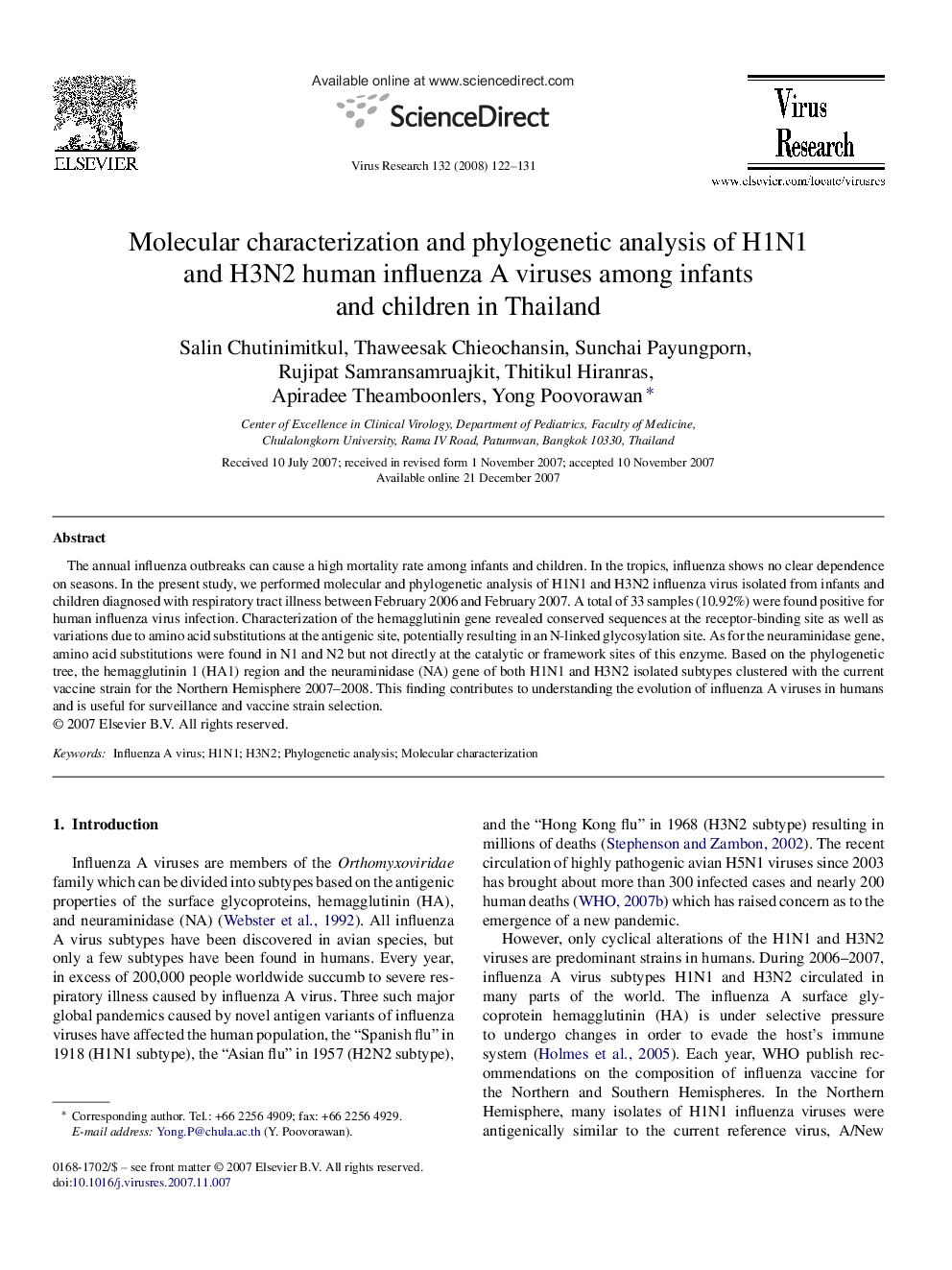| Article ID | Journal | Published Year | Pages | File Type |
|---|---|---|---|---|
| 3430517 | Virus Research | 2008 | 10 Pages |
The annual influenza outbreaks can cause a high mortality rate among infants and children. In the tropics, influenza shows no clear dependence on seasons. In the present study, we performed molecular and phylogenetic analysis of H1N1 and H3N2 influenza virus isolated from infants and children diagnosed with respiratory tract illness between February 2006 and February 2007. A total of 33 samples (10.92%) were found positive for human influenza virus infection. Characterization of the hemagglutinin gene revealed conserved sequences at the receptor-binding site as well as variations due to amino acid substitutions at the antigenic site, potentially resulting in an N-linked glycosylation site. As for the neuraminidase gene, amino acid substitutions were found in N1 and N2 but not directly at the catalytic or framework sites of this enzyme. Based on the phylogenetic tree, the hemagglutinin 1 (HA1) region and the neuraminidase (NA) gene of both H1N1 and H3N2 isolated subtypes clustered with the current vaccine strain for the Northern Hemisphere 2007–2008. This finding contributes to understanding the evolution of influenza A viruses in humans and is useful for surveillance and vaccine strain selection.
